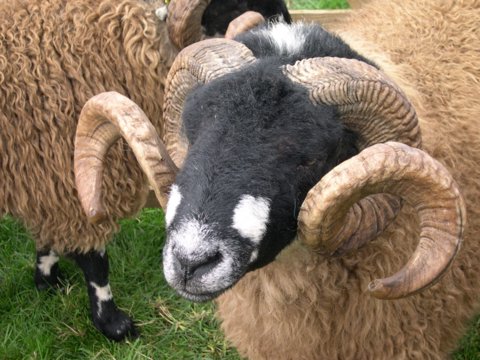Depending on how familiar you are with sheep, you may have noticed that some sheep have horns and some do not. Horns on sheep are something that some keepers prefer, while others dislike.
Myself I prefer having horns on a ram, as they make for great handles, but like ewes without. That is to say I like a non-polled (has horns) ram, and polled (no horns) ewes. I do, however, have one ewe that has 5 horns, 3 well formed, and 2 smaller (scurred).
Patsy, one of our sheep, part Jacob, part Barbado.
People who breed purebred sheep might select for, or against, horns as a result of the breed standard and their own preference. Some sheep breeds do not have horns on rams or ewes, others have horns on both genders, while others have horns only on the rams. Owners of sheep breeds that can be either polled, or non polled, often select one or the other, but those keepers who have a preference need to select a breed that fits with their desires to have horns or not.
Goats often have their horn buds removed early in life because their horns tend to grow straight up, while sheep horns are often curled, and as such are less dangerous. This is true of most sheep breeds, but not all, the Jacob sheep often have several horns (four is common) and these can be curled or straight.
Unknown sheep breed - photo by NicePics from London, UK (Sheep with interesting horns) [CC-BY-SA-2.0 (www.creativecommons.org/licenses/by-sa/2.0)], via Wikimedia Commons
You can read more about sheep horns, advantages, disadvantages, what they are made of, and horn genetics, click here.
You can read more, and see other pictures, of the Jacob Sheep, click here.






